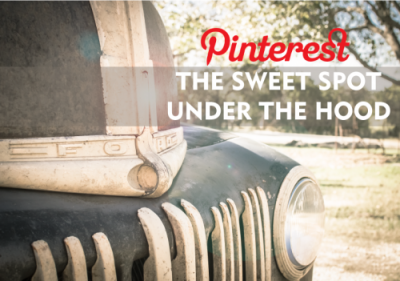in: Pinterest
by: Katie Hellmuth Martin

Pinterest's most recommended strategy for getting repinned is to write a great description when pinning. But that is advice for everybody else pinning your content. You only pin your content once (usually), and now everybody else has to pin it too in order to get any traction and traffic to your website. But you're not hovering over the shoulder of everybody else. So how do you get everyone to write effective descriptions about the picture they just pinned at your website?
You do the work for them by writing a great description in the alt attribute field.
The what?
The alt attribute field. Keep reading, it's really easy to use, you just have to know where to find it and what to write there. Which I am going to show you - with pictures!
You've probably read about the alt attribute field from other digital marketers writing about Pinterest. If it sounds more familiar in other ways, it is because you probably also read about it in your SEO research or how alt attributes are used in newsletter marketing. The alt attribute is short for "alternative attribute". It is a little trick in the code that tells a computer:
"Hey - if the person can't see this image for some reason, like if they are blind or if their phone is loading data slowly, or if the image link is broken, then read or show them these words that describe what the image is supposed to look like."
Pinterest wants to know what the image looks like too, so it automatically loads the words you have in the alt attribute field into the description area when a person is pinning.
WHERE TO FIND THE ALT ATTRIBUTE IN YOUR WEBSITE
The location is different depending on which website service you are using. The alt attribute text field is found in that space in time when you have clicked a little image icon, like a mountain, in your website editor, and you are prompted to upload an image. You'll find more options to edit here as well.
Here is an example of what my image tool looks like when I uploaded the main image of this article into this page. This website runs on Drupal, so this is how Drupal looks:

If you're using another website service, like Wix, Shopify, Blogger or Wordpress, this may look slightly different. For example, in Blogger, the alt attribute is really hard to find (which is ironic because Blogger is owned by Google and Google really likes to read alt attributes too). Blogger's alt attributes are hidden behind a link called "Properties" when you click on the image itself to edit it. A list of links are revealed, and "Properties" is one of them. Then the alt attribute field looks like this:

In MailChimp, the alt attribute is even harder to find. It's below the fold on small computers, and needs to be clicked to be shown. The below example is a great one, but it also illustrates how website and newsletter services will use an image's filename to automatically fill in the alt attribute, which I talk about in more detail here.

WHAT TO WRITE IN THE ALT ATTRIBUTE AREA TO HELP GET REPINNED IN PINTEREST
Filling in the alt attribute used to involve weaving in the keywords on your page. That was the SEO strategy. The Pinterest strategy involves much more thought - and time. But taking the time to write better alt attributes will pay off in Pinterest by helping the pinned image get found in Pinterest by people typing in search terms into Pinterest. Follow these guidelines when writing your alt attribute copy:
- Write in full sentences using capital letters.
Since Pinterest is going to pull the alt attribute into the description field, you want it to look and read pretty. Use punctuation correctly and consider applying uppercase letters to the first letter of each word. - Keep those keywords in mind!
Keywords are still very important in Pinterest and in SEO. Use words that people will be searching for. Like "pink" and "umbrella" and even "easy recipe" or "inspiring" and words that people are craving answers for. - Repeat your article's title.
If you are all tapped out and can't think of anything to write, just repeat your article's title. - Avoid use of quotations marks.
In the code or HTML of your web pages, quotation marks are used to end code commands. Don't use them within your alt attribute, because you could inadvertently trigger the end of your alt attribute before you intended to. Just stick to periods and commas to be safe.
Take a look at how your filled in alt attribute will look when you are editing it:

Filling in your alt attribute will feel repetitive, but is so worth it in the end for getting re-pinned on Pinterest! You are writing your descriptions for your readers, and doing the work for them!







